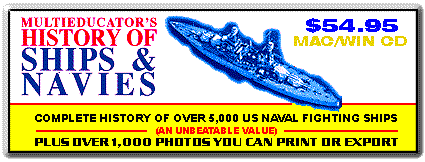 |
|
|
|||||||
|
|
|||||||
|
|
|||||||
 |
|||||||
| Newark II (SP-266: dp. 231; 1. 107'; b. 26'; dr. 11'6"; s. 14 k.; a. 1 1-pdr.) The second Newark, a tug built by Skinner Shipbuilding Co.,Baltimore, Md. in 1913, was acquired by the Navy from Delaware, Lackawanna & Western Railroad Co. 18 August 1917 and commissioned 23 September 1917, Ens. John W. Barr in command. Operating in the 3rd Naval District, New York during World War I, Newark got under way 26 September as a mine sweeper in and around New York, berthing at Marine Basin. She steamed on patrol to Whitestone, L.I. 4 January 1918. In February she operated in a tug capacity, breaking ice in Marine Basin, helping 6 SC boats out of the harbor, and towing ships from docks to coal barges. In May she resumed mine sweeping activities, operating in Ambrose Channel. On 22 January 1919, Newark steamed up to Fort LaFayette, towing barges and ships such as Lowell to the Lackawanna coal docks. After the war, Newark decommissioned 15 May 1919 and was sold 19 May 1919. The Cleveland class light cruiser Newark (CL-100) was reclassified CV-30 on 2 June 1942 and was renamed Reprisal 23 June 1942. While under conversion to an aircraft carrier, she was renamed San Jacinto (q.v.) 6 January 1943. The Fargo class light cruiser Newark (CL-108) was laid down 17 January 1944. Her construction was cancelled 12 August 1945, when 67.8°,lo completed. However, the hulk was launched in December 1945 for use in underwater explosion tests. In March 1948, she was towed from Norfolk Navy Yard to the test area near the mouth of the Patuxent River in Chesapeake Bay and participated in tests until July 1948. Returning to the Norfolk Navy Yard, the hulk was surveyed in October 1948, for possibility of completion, but was pronounced "unfit for naval service" and sold to American Shipbreakers Inc., Philadelphia, Pa. for scrapping 2 April 1949. |
|||||||
 |
|||||||